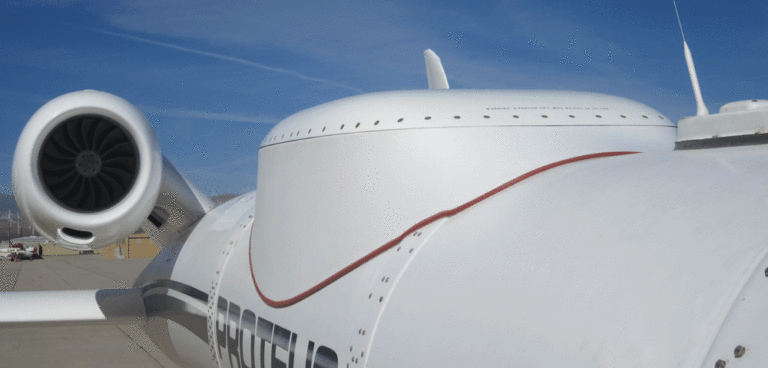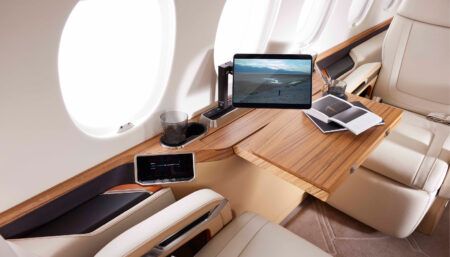Inflight trials have been completed to demonstrate ThinKom Solutions’ ThinAir Ka2517 phased-array antenna. The connectivity equipment was mounted on the Proteus high-altitude long-endurance aircraft.
The Proteus satellite data communication package was developed as a joint effort involving ThinKom, Inmarsat Government and Scaled Composites. The trials included initial tests in Chantilly, Virginia, and the Mojave Air and Space Port, California, culminating in a series of demonstration flights at White Sands Missile Range, New Mexico.
The ThinAir antenna delivered a 25Mbps return link and a 5Mbps forward link operating at over 50,000ft altitude through an Inmarsat Global Xpress Ka-band satellite in geostationary orbit. The phased array maintained connectivity to the satellite each flight, including during take-offs, inflight maneuvers and landings. The ThinAir antenna was able to send the full 25Mbps from the aircraft at an elevation angle of 25°, while providing data rates of 1Mbps at elevation angles as low as 15°.
ThinKom supplied the Ka2517 phased-array antenna in a low-profile 7.8in (19.8cm) high radome, along with an adaptor plate, antenna controller and transceiver electronics. Scaled Composites designed and built a custom fairing to mount the radome on the aircraft’s fuselage and integrated the ThinKom system with the payload on the aircraft.
Inmarsat Government developed and provided the system’s modem manager, Pro-Modman, designed specifically for the Ka2517 to operate on Inmarsat Global Xpress Ka-band steerable beams. Pro-Modman is designed to integrate the capability of a DVB S2X modem with the flexibility of an OpenAMIP configurable system controller.
“These successful inflight demonstrations further validate the ThinAir Ka2517’s capability to provide uninterrupted broadband connectivity with near-zero aerodynamic drag – an important consideration for many classes of UAVs and long-endurance missions flying at extreme altitudes,” said Bill Milroy, chief technology officer at ThinKom Solutions.
“I would like to thank the superb engineering teams from Inmarsat Government and Scaled Composites who worked with us to achieve this important milestone. This was truly a team effort.”
“Inmarsat Government was pleased to support this important joint demonstration using the Inmarsat Global Xpress capability,” said Steve Gizinski, chief technology officer, Inmarsat Government. “The results of the trials proved, once again, that highly mobile government customers can rely on Global Xpress – a globally available high-throughput, flexible and interoperable connectivity solution that provides coverage wherever and whenever required.”
Proteus is a twin-turbofan tandem-wing aircraft developed and built by Scaled Composites in 1998. It is owned and operated by Scaled Composites. The experimental aircraft is designed to carry payloads up to 2,000 lb (907.2kg) at altitudes from 50,000-63,000ft and remain on station more than 14 hours. It is intended to support the demonstration of piloted and UAV missions, including telecommunications, reconnaissance, atmospheric research, commercial imaging and space launch.





